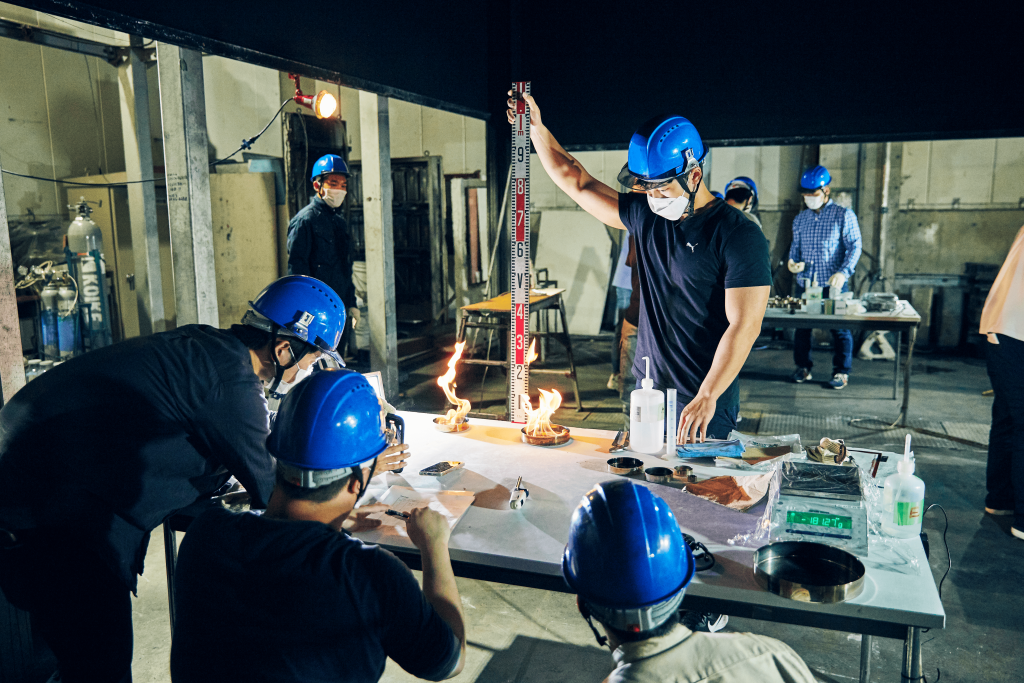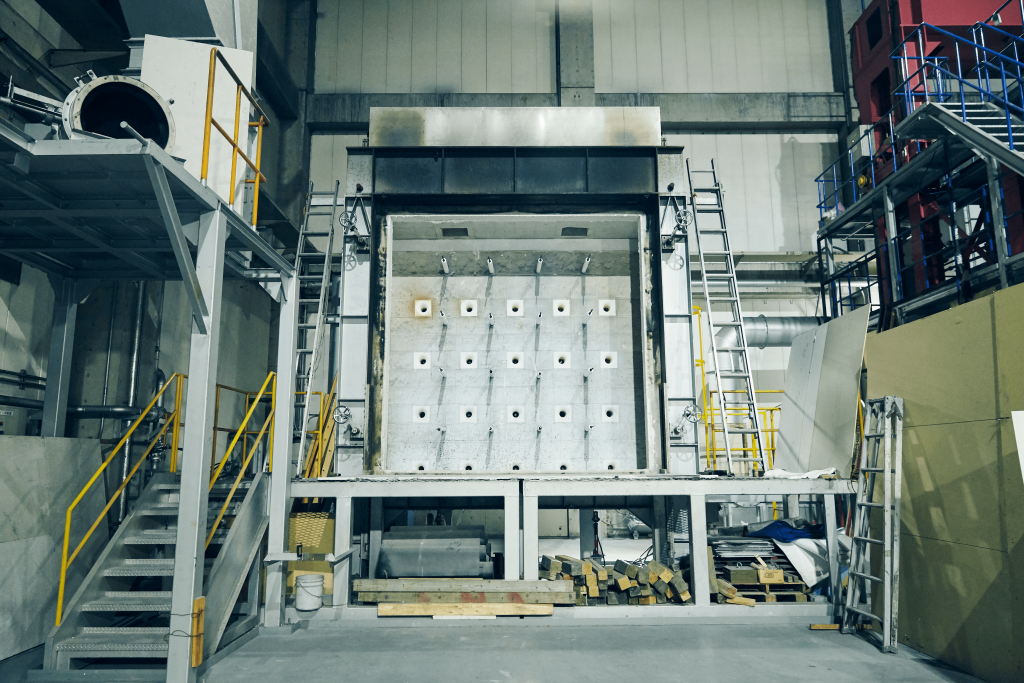Fires continue to be part of life. The great fires of the Edo period (1603-1868) are well known, but even today, hundreds of years later, we still see the tragedies they cause. The Research Institute for Science and Technology’s Center for Fire Science and Technology is tackling such fires head-on, accumulating knowledge and technologies to protect lives and property. Professor Matsuyama says, “I mainly study fire dynamics, so I know we must approach this subject from various perspectives, including combustion-caused flaming properties, how smoke flows and flame spreads, and toxic gases.” In other words, taking effective countermeasures against fires will be impossible unless we can understand and predict the specific phenomena that occur with fires. Meanwhile, Professor Kuwana says, “We are studying fire and explosion phenomena. We are attempting to scientifically explain these phenomena at the laboratory scale as well as through large-scale outdoor experiments.” Because knowledge of such fire phenomena can be applied not only to buildings but also to railroads and other transportation systems, chemical plants, and the like, fire research is a field that continues to expand.

The Center for Fire Science and Technology conducts research in four areas: (1) fire physics and chemistry, (2) evacuation and human behavior, (3) disaster prevention with structural fire resistance and materials, and (4) firefighting and industrial fire prevention. At the core of the center’s research is a dedicated laboratory building that ranks among the largest and most capable in the world. Its numerous findings have led to proposals for new laws and standards and can be applied to structural fire safety measures. Recently, however, fires of an unanticipated and unforeseeable nature have been occurring in various places, making countermeasures an urgent necessity. Professor Matsuyama says, “We cannot ignore the fact that incidents involving arson and other types of fires are occurring. We believe ensuring safety that surpasses the danger of such fires will help reduce their damage.” Professor Matsuyama is working with Professor Kuwana to explore the induction of smoke particles using specialized functions. It is hoped that the fruits of their research will translate into practical applications and thereby help make smoke exhaust systems in Japan’s high-rise buildings much more efficient and protect people from unforeseeable fires.

Practical lessons in the dedicated laboratory building—which stands 20 meters high from the floor to the ceiling—are attended by many foreign students from Asia. The students have many opportunities to make technical proposals concerning fire-related laws and regulations in Asian countries. On the other hand, numerous joint industry-academia studies have been conducted on fire in Japan. Examples include studies on fires at nuclear power plants and cigarette-caused fires, topics that are important in terms of disaster prevention in Japan. And whenever a fire breaks out, the center is inundated with inquiries. This is yet another demonstration of the center’s status as one of Japan’s leading institutions for fire research. Looking to the future, Professor Kuwana says, “I want to go one step further from understanding fire phenomena to creating products that can protect lives from fire.” Fire remains a threat to us all, but little by little, progress is being made. Professor Matsuyama says, “Ten years ago, there were 50,000 fires in Japan, but now there are about 35,000. I think our success in regulating buildings and developing technology has had something to do with this.” We would like to believe the day is coming when fires will no longer occur in this country.
■ Main research themes
■ Main research themes